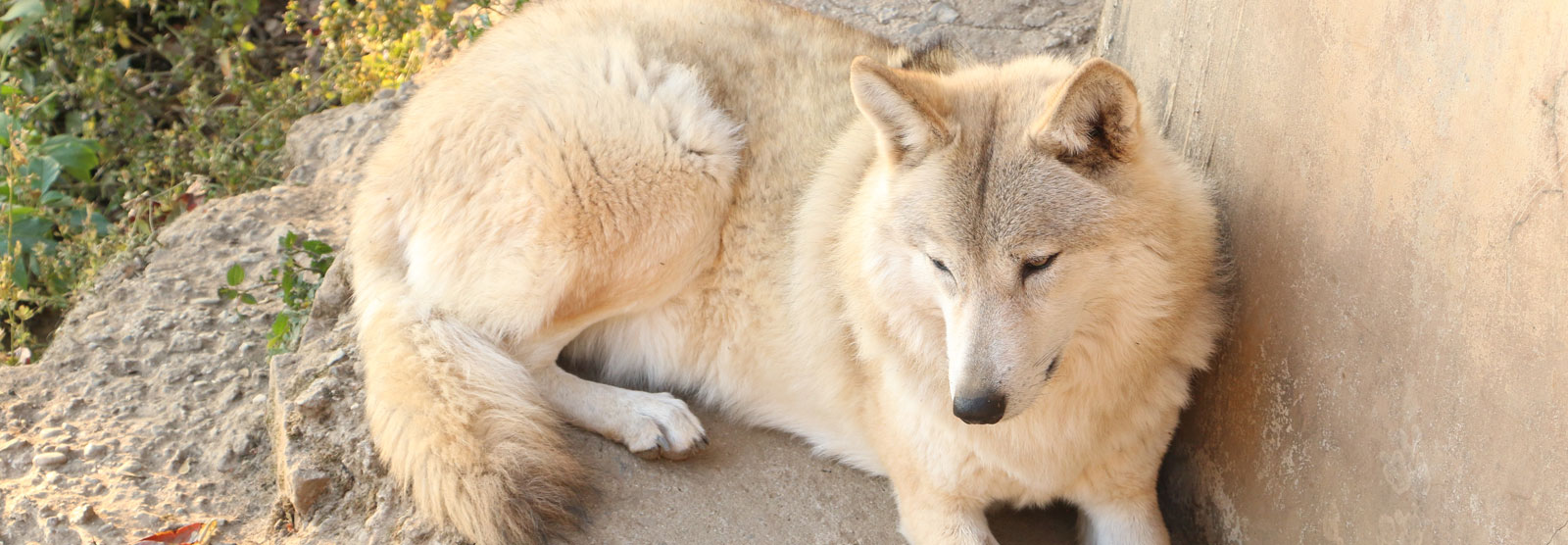

The Himalayan Wolf (Canis himalayensis) is found at an altitude between 7000- 13000ft above msl in the Western Himalayas. This carnivore preys upon larger mammals to rodents, birds or even crabs etc.This wolf differs from the common wolf (Canis lupus lupus) in its thick blackish coat and heavier build. This wolf is thought to be the ancestor of the domestic dog. They have powerful jaws and vocal communication is well developed between them.
Increased human settlement and persecution of the animal for the commercial value of its fur are responsible for the depletion of its numbers in the wild. It is listed in Schedule I of the Wildlife Protection Act (1972) and the wolves in India and Nepal are listed in CITES Appendix I as endangered due to international trade.
HISTORY
Darjeeling Zoo has been breeding Himalayan wolves very successfully and it’s the only zoo in the world to breed Himalayan wolves. In the year 1990, the first pair of wolves were received from Shimla Zoo. In 1999, a molecular study was conducted on the Himalayan wolf population in the Zoo by the Center for Cellular and Molecular Biology, Hyderabad.
The results showed that the captive Tibetan wolf population in Padmaja Naidu Himalayan Zoological Park, Darjeeling had considerable genetic variation and were genetically healthy.
The results also suggested the Himalayan / Tibetan wolf and grey wolf probably had two different evolutionary lineages.
It was also indicative of the possibility of the Tibetan wolf being a new species that may be named Canis lupus himalayensis.
As the wolves are breeding well in the zoo, the population was as high as 32 wolves in 2003, hence to control the population, the wolves were selectively sterilized through vasectomy and ligation.
In 2007, the Park was designated as the coordinating zoo for the conservation breeding of the species by the Central Zoo Authority.
Himalayan zoological park, Sikkim; Himalayan Nature Park, Kufri, and Pt. Govind Ballabh Pant High Altitude Zoo, Nainital were declared as participating zoos.
Himalayan wolves from Padmaja Naidu Himalayan Zoological Park have been given to different zoos in India. In 1997 a pair of Tibetan wolves were given to Nainital Zoo.In 1999 another pair went to Gangtok Zoo.
In 2004, two male and three female wolves were sent to Nainital Zoo and three males and three females went to Shimla Zoo.
In 2005, two male and two female wolves were given to Gangtok Zoo. The Zoo at present has 5 (2:3) wolves.
ENCLOSURES AND ENRICHMENT
The enclosures are designed with consideration of the biological and behavioral needs of the animals. The design incorporates sufficient space to facilitate normal movements, a range of natural behaviors, as well as adequate space for members of the public who come to view them. The provision of an appropriate amount of space, along with factors impacting animal well-being, at the design stage helps ensure an acceptable quality of life for the captive and prevents animals from constantly searching for escape routes.
The enclosures are open, with undulating topography with small trees, shrubs, logs with intact bark and leaves, stumps, and rock piles. Furnishings like dens are also providedforthe provision of shade and hiding spots for animals that wish to remove themselves from the view of the public or each other.
